When Gian Lorenzo Bernini (1598-1680) moved with his family to Rome in the early 17th century, he was amazed by the city’s architecture.
His big dream as a child was to decorate the magnificent St. Peter’s Basilica that he had visited with his father. The reality far exceeded the child prodigy’s wishes.
Very few Baroque artists managed to put such a mark on a city as Bernini did. He produced stunning sculptures for churches and designed fountains all across Rome.
Let’s take a closer look at some of the most interesting facts about Elephant and Obelisk, a fountain in Rome by the hand of the Baroque sculptor.
1. It’s located on a square just near a famous ancient Roman temple
Elephant and Obelisk is the name of a statue of an elephant carrying an ancient obelisk. It’s located in the heart of Rome on a square called the Piazza della Minerva.
This square is situated just northeast of the Roman Forum and borders the southeastern tip of the Roman Pantheon, one of the most amazing Roman temples ever constructed.
The Santa Maria Sopra Minerva Basilica is a Gothic church that borders the eastern end of this relatively small square in central Rome.
It has decorated this square since it was completed in the year 1667.

2. The obelisk once decorated an Egyptian Pharaoh’s capital city
The monument on the Piazza della Minerva features a pedestal topped by a Baroque sculpture of an elephant and an ancient obelisk.

This obelisk is made of red granite and was discovered during excavations near the church of Santa Maria Sopra Minerva in 1665.
The church was constructed on top of an ancient Roman temple that was dedicated to the Egyptian goddess Isis.
This temple was erected in the 1st century A.D. and it’s assumed that the obelisk was brought to Rome around that time.
This obelisk is much older because it was erected around 580 B.C. by Pharaoh Apries of the 26th Dynasty. It decorated his capital city of Sais in the northern part of Egypt.
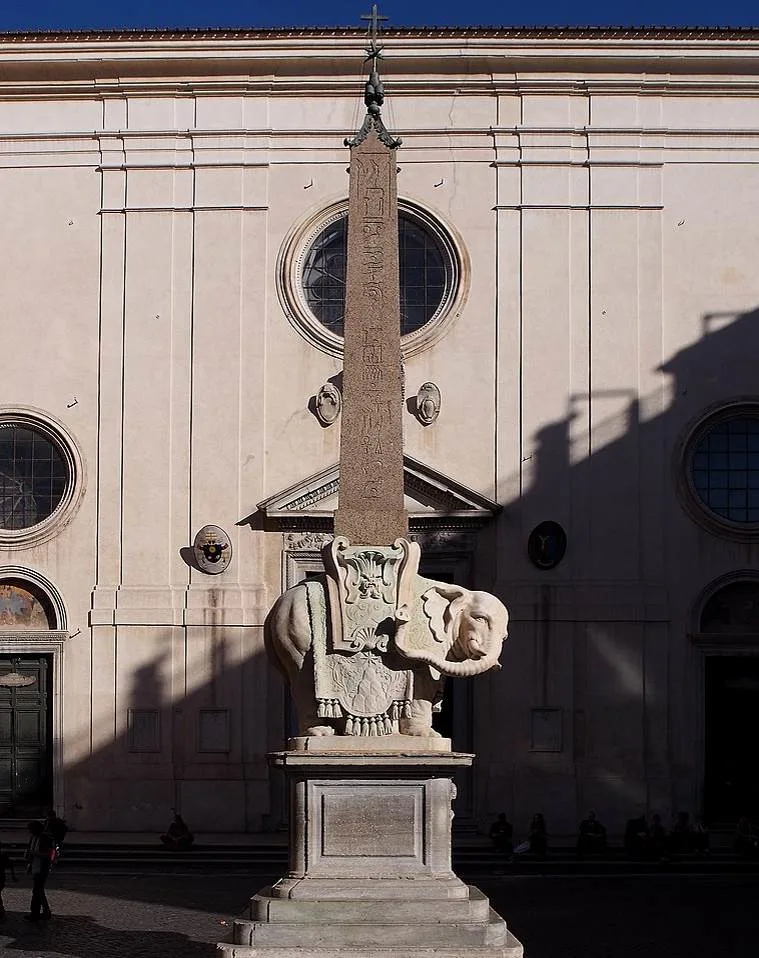
3. It’s the smallest of the 13 ancient obelisks present in Rome today
So how big is the ancient obelisk that tops the Elephant and Obelisk monument?
No other city in the world is home to more ancient obelisks than Rome. A total of 13 ancient monuments can be found decorating various squares in the city.
This red granite obelisk is the smallest of the 13 as it only stands 5.47 meters (17.94 feet) tall. The entire monument featuring the pedestal and elephant stands 12.69 meters (41.63 feet) tall.
Fun fact: The tallest obelisk in Rome is the so-called “Lateran Obelisk.” It’s located at the Piazza di San Giovanni in Laterano and stands 32.18 meters (105.6 feet) tall.
It once decorated the Karnak Temple complex near Luxor and is the tallest standing ancient Egyptian obelisk in the world!

4. The obelisk’s counterpart decorates a square in another Italian city
Obelisks were usually erected to decorate both sides of the entrance to a temple in Egypt. The obelisk once erected in the ancient city of Sais was no different.
Its counterpart can be found in the Italian city of Urbino. This obelisk was once placed on the Campus Martius in Rome but was moved to Urbino in the year 1737.
The city of Urbino is a popular tourist destination in the Marche region of Italy. The obelisk is located on the so-called Renaissance Square facing the east side of the Ducal Palace of the city.
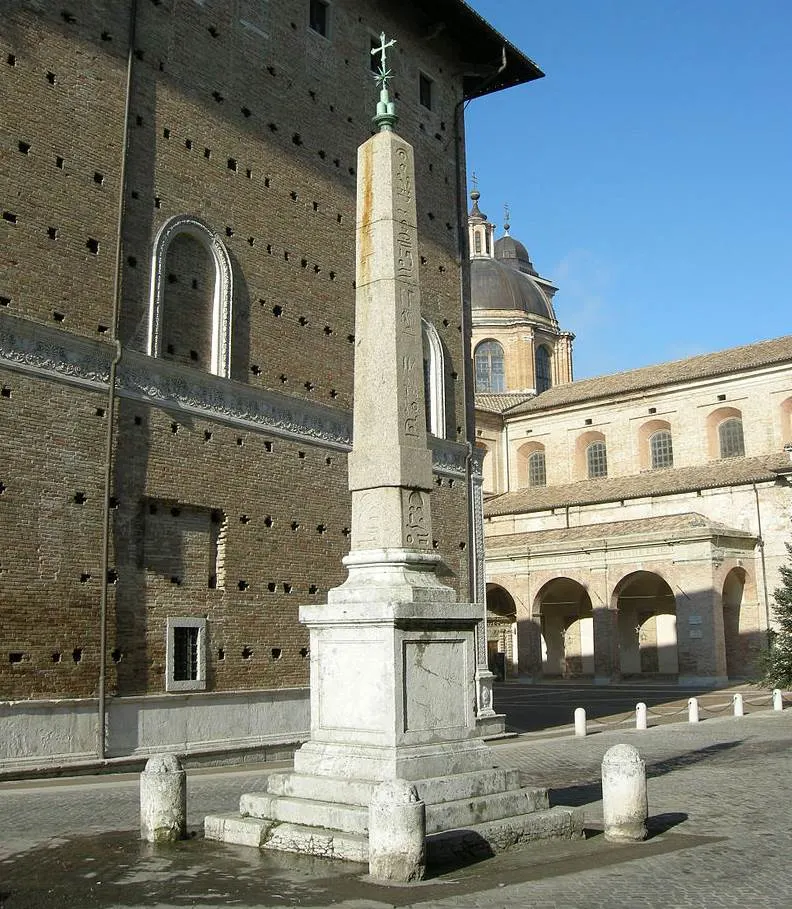
5. Bernini made preparatory drawings of the elephant 3 decades earlier
One of the most fascinating facts about Elephant and Obelisk is that Bernini conceived the concept of this monument much earlier than it was erected.
He already produced a preparatory drawing of the elephant in the 1630s when Cardinal Francesco Barberini wanted to erect an Egyptian obelisk in front of his opulent Palazza Barberini in Rome.
This project was never completed and the preparatory drawings somehow ended up in the collection of Windsor Castle in England.
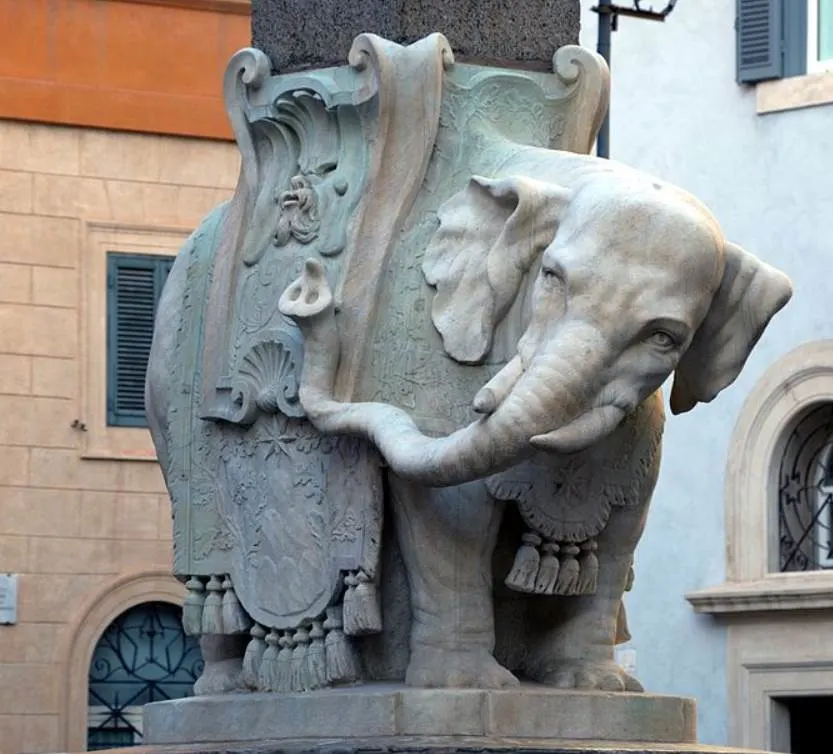
6. The image of the elephant was derived from a late-15th-century book
Bernini likely got the idea for the monument from “Hypnerotomachia Poliphili,” a book that was printed in 1499 in Venice.
The Engish title of the work is “Poliphilo’s Strife of Love in a Dream” or “The Dream of Poliphilus” and it was produced when printing was still in its infancy in Europe.
It features a large number of images and one that remarkably looks similar to the monument erected in the year 1667.
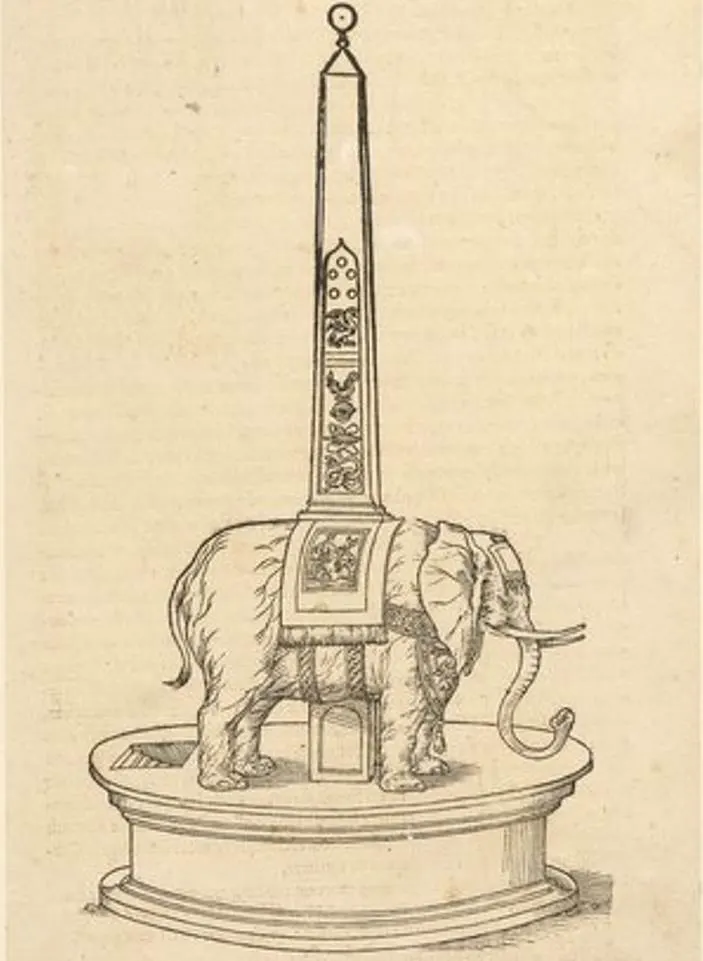
7. The pedestal of the Elephant and Obelisk features a Latin inscription
The pedestal on which the elephant stands features a Latin inscription that describes the idea behind the monument. It reads:
SAPIENTIS AEGYPTI INSCULPTAS OBELISCO FIGURAS AB ELEPHANTO BELLUARUM FORTISSIMA GESTARI QUISQUIS HIC VIDES DOCUMENTUM INTELLIGE ROBUSTAE MENTIS ESSE SOLIDAM SAPIENTIAM SUSTINERE
And this translates to:
Let any beholder of the carved images of the wisdom of Egypt on the obelisk carried by the elephant, the strongest of beasts, realize that it takes a robust mind to carry solid wisdom.

8. Salvador Dalí once features the statue in one of his paintings
A monument that features an Elephant and Obelisk was erected in the Sicilian city of Catania in 1736. It fittingly decorates the square in front of the “Palazzo degli Elefanti.”
It’s clear that the Fontana dell’Elefante in Piazza del Duomo in Catania was inspired by Bernini’s work in Rome.
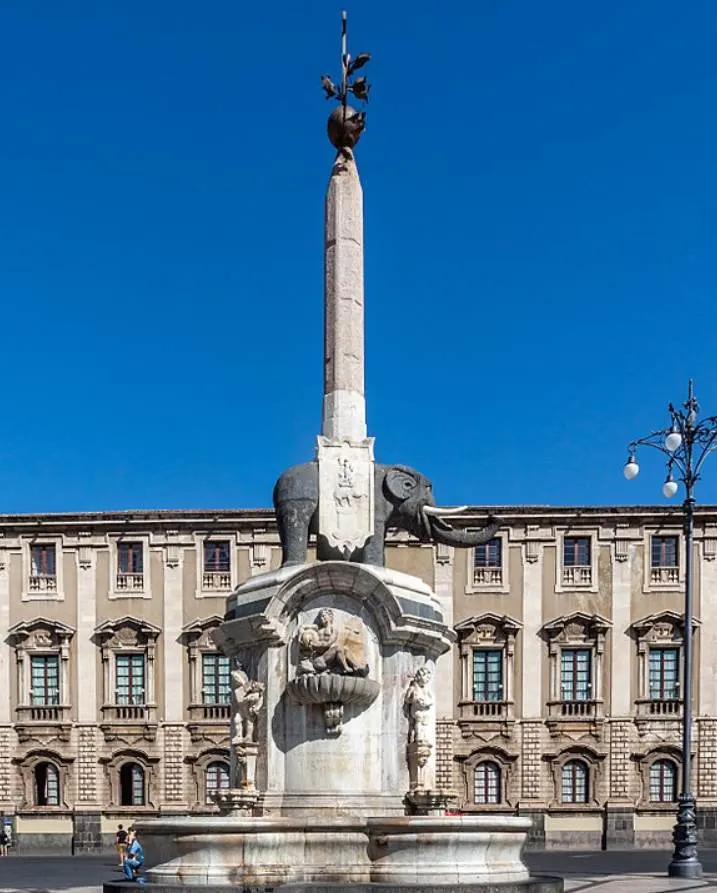
Another fascinating derivative work was produced by Surrealist artist Salvador Dalí in 1948. This was the year that he painted “The Elephants.”
The Spanish artist mentioned himself that it was inspired by Bernini’s design and the resemblance of the long-legged elephants carrying obelisks is indeed striking.

